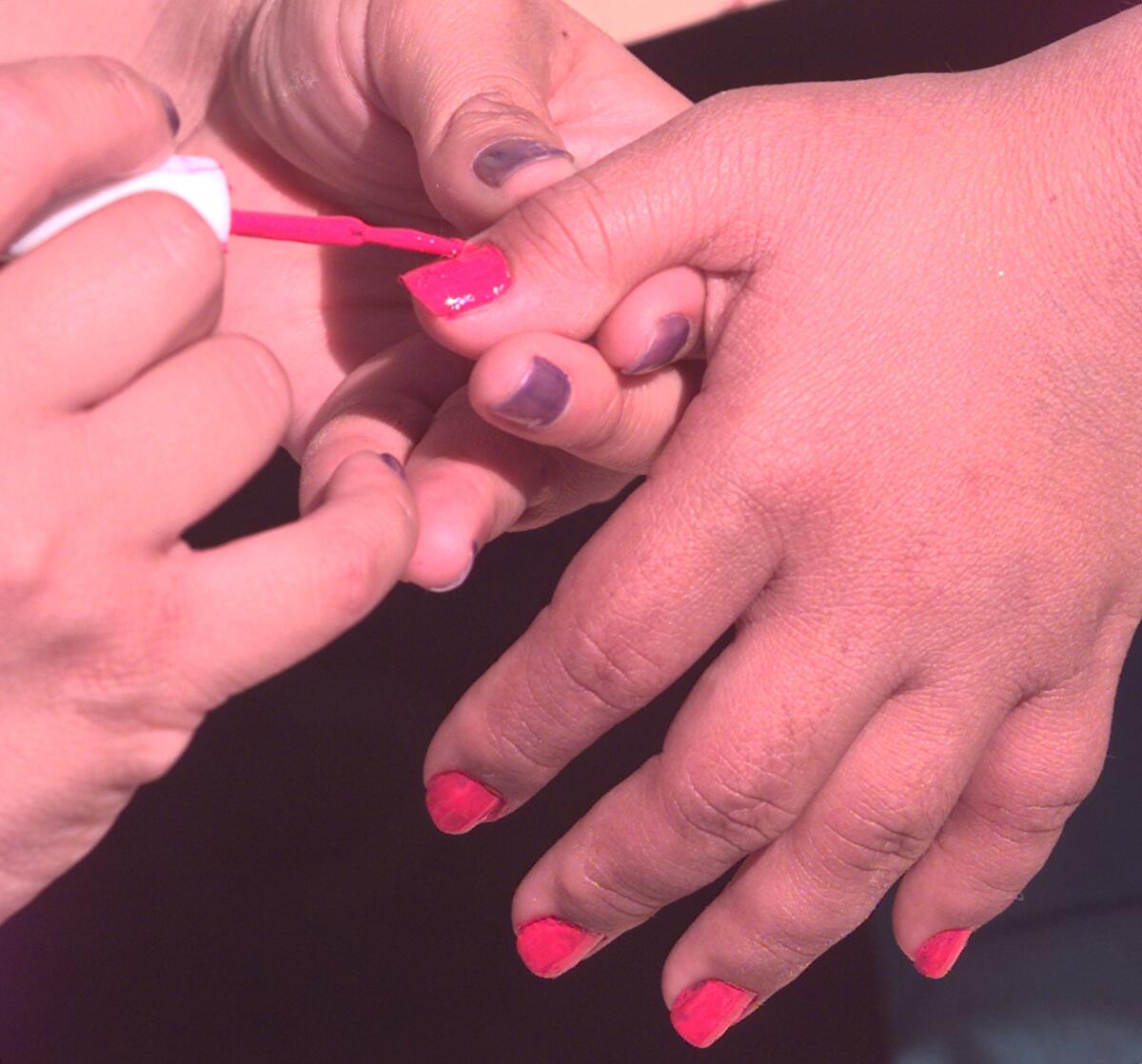Editorial: Schools should worry about kids’ education, not their nail polish

More than 5,000 years ago, the warriors of Babylonia painted their fingernails with kohl to go to battle. More recently, A-list actor Brad Pitt wore nail polish, apparently just for the heck of it.
Yet for some reason, it’s a showstopper when a 17-year-old male in Texas wears nail polish to school?
Granted, women have been practically the only ones decorating their nails for the last few centuries. But custom and convention are no reason for nail polish to be an exclusively female style — witness how earrings have become commonplace for men.
The real problem is schools’ efforts to force traditional gender roles on students, including dictating the way boys and girls dress and groom themselves. These rules continue in many areas of the nation. It’s the modern equivalent of making sure that girls play with dolls and boys with toy trucks.
Trevor Wilkinson, the aforementioned 17-year-old in the small central Texas town of Clyde, was given an in-school suspension this month for wearing nail polish, even though the school dress code allows girls to wear it. The same would be true for makeup, if Wilkinson had chosen to try that. He’s started a petition to change the minds of school authorities.
But it shouldn’t be up to the Clyde Consolidated Independent School District to update itself to contemporary reality, in which sexual identity is more fluid than the rigidly binary world of “he” and “she,” and more people, regardless of their sexual orientation, are bending traditional gender norms in fashion, sports and lifestyle. Schools nationwide should be dropping rules that discriminate by sex, and ought to be required to do so by law or court rulings if necessary. California law protects students from these kinds of arbitrary standards, but the state is at the forefront of the issue.
The courts have generally upheld schools’ authority to create and enforce dress codes, as long as those rules don’t infringe on students’ right to free expression, such T-shirt slogans that spell out their political beliefs. And as long as those rules are reasonable — no showing of underwear, for example — they can be a good idea.
Of course, students’ stylistic choices are the last worry on most schools’ minds these days. They’re more focused — rightly — on whether and when to reopen campuses, how to keep kids learning from home and, once they reopen, how to keep staff and students safe from COVID-19.
Not so in the Lone Star State. Earlier this semester, a transgender high school student in eastern Texas was told she must cut her hair and make other changes to her appearance to conform with the dress code for male students.
The legal limits on gender-based dress codes aren’t as clearly defined as they are for free speech. But the courts have generally held that when schools impose different dress and grooming rules based on gender, they cannot violate the Equal Protection Clause of the U.S. Constitution. According to a 2019 article in the Boston College Law Review, schools must have “persuasive reasons” for those differences in rules, which must not “perpetuate gender-based stereotypes.” Otherwise, they must show that the rules are necessary for keeping the campus free of disruption.
Let’s face it. The people who are most disrupted by a boy with nail polish or a transgender girl wearing a dress are the school authorities. If anything, these battles over dress and grooming do more to create controversy at schools than do the students making nontraditional fashion decisions.
If a girl’s leggings distract boys — another bit of recent dress-code nonsense that discriminates against females — that’s actually the boys’ problem. If a boy’s nail polish somehow bothers others on campus, they need to learn to get over it. It’s a big world out there beyond high school, and this is a good time for students to learn to get along with diversity on many fronts. Many of those seemingly out-there fashion choices will penetrate the mainstream, just as athleisure displaced the uncomfortable world of suits, ties, nylons and high heels in many offices.
Schools might argue that they’re not discriminating when they have dress rules for both boys and girls. But an increasing number of people, particularly young people, are claiming their ground to identify and present themselves in more fluid ways. Schools should stick to deciding what academics they’ll learn — and to teaching kind and tolerant behavior toward all.
More to Read
A cure for the common opinion
Get thought-provoking perspectives with our weekly newsletter.
You may occasionally receive promotional content from the Los Angeles Times.










